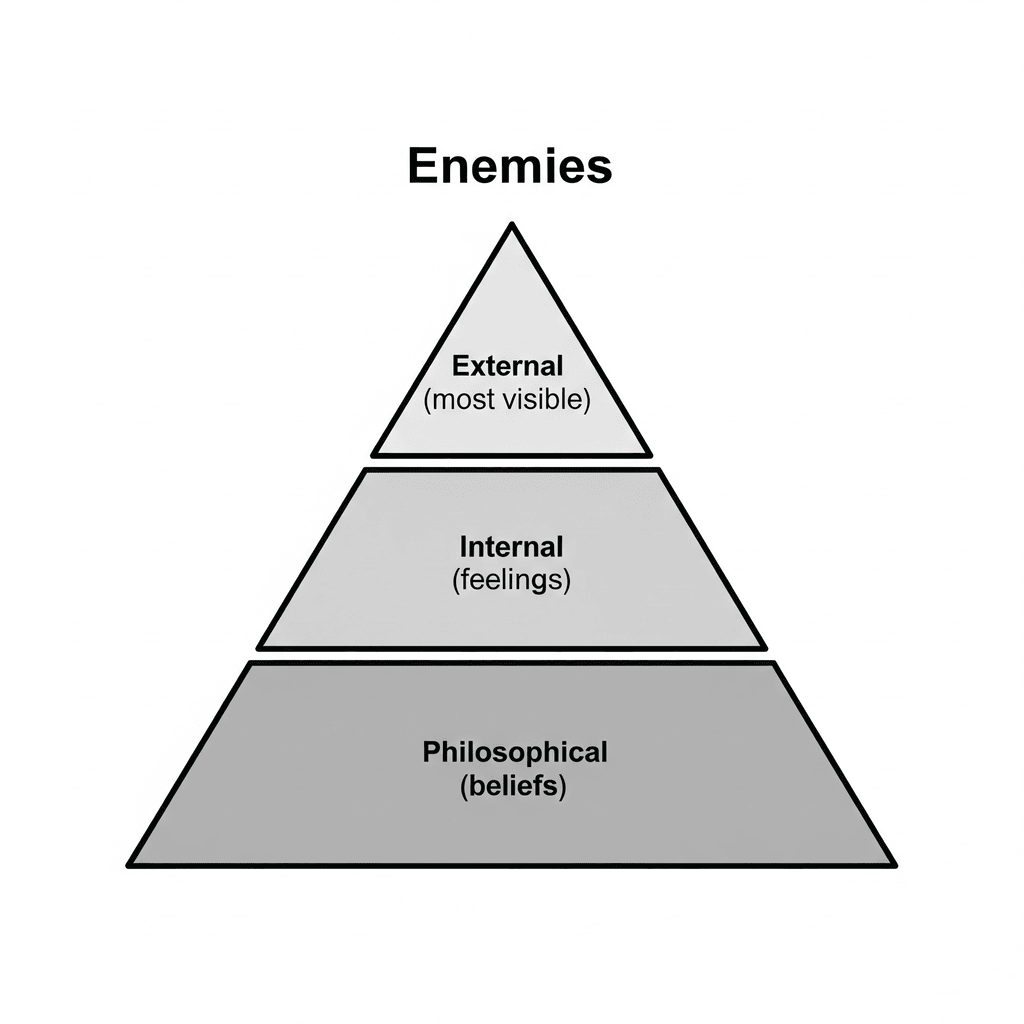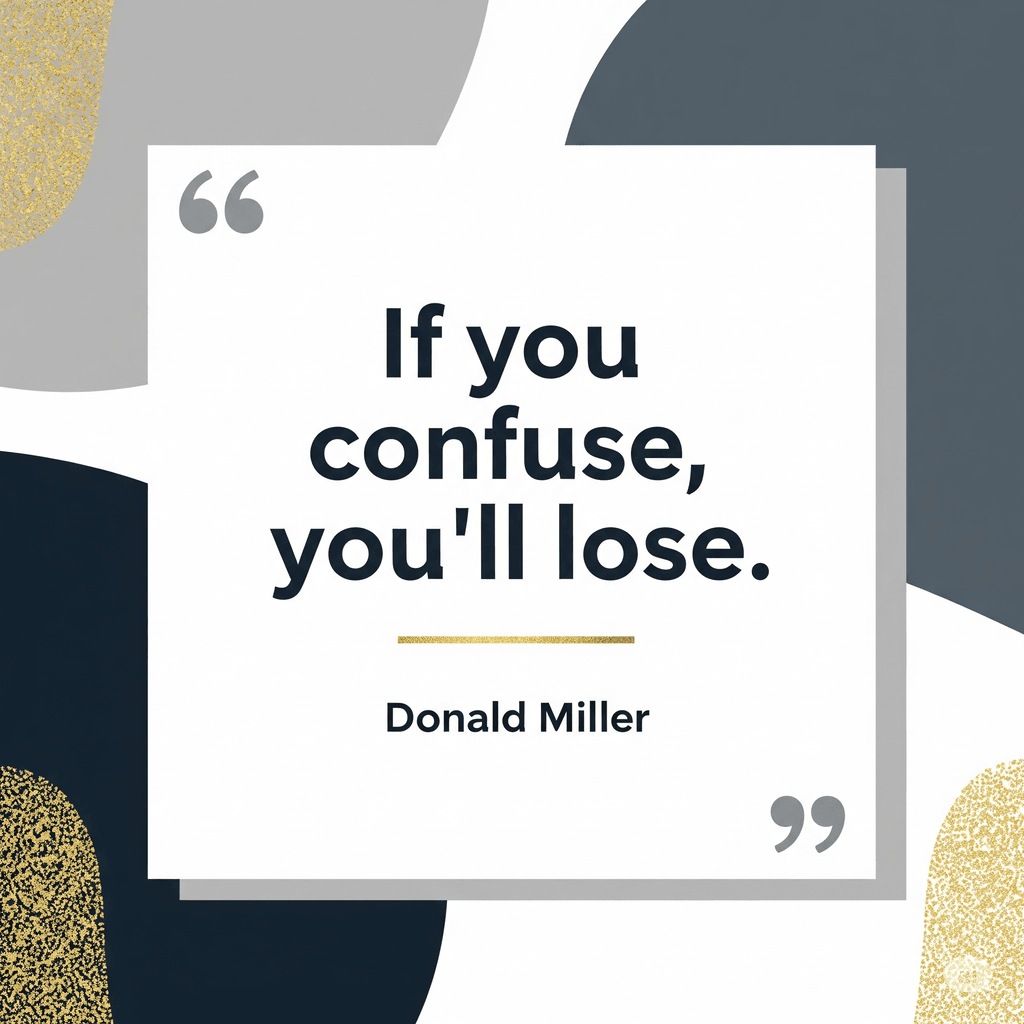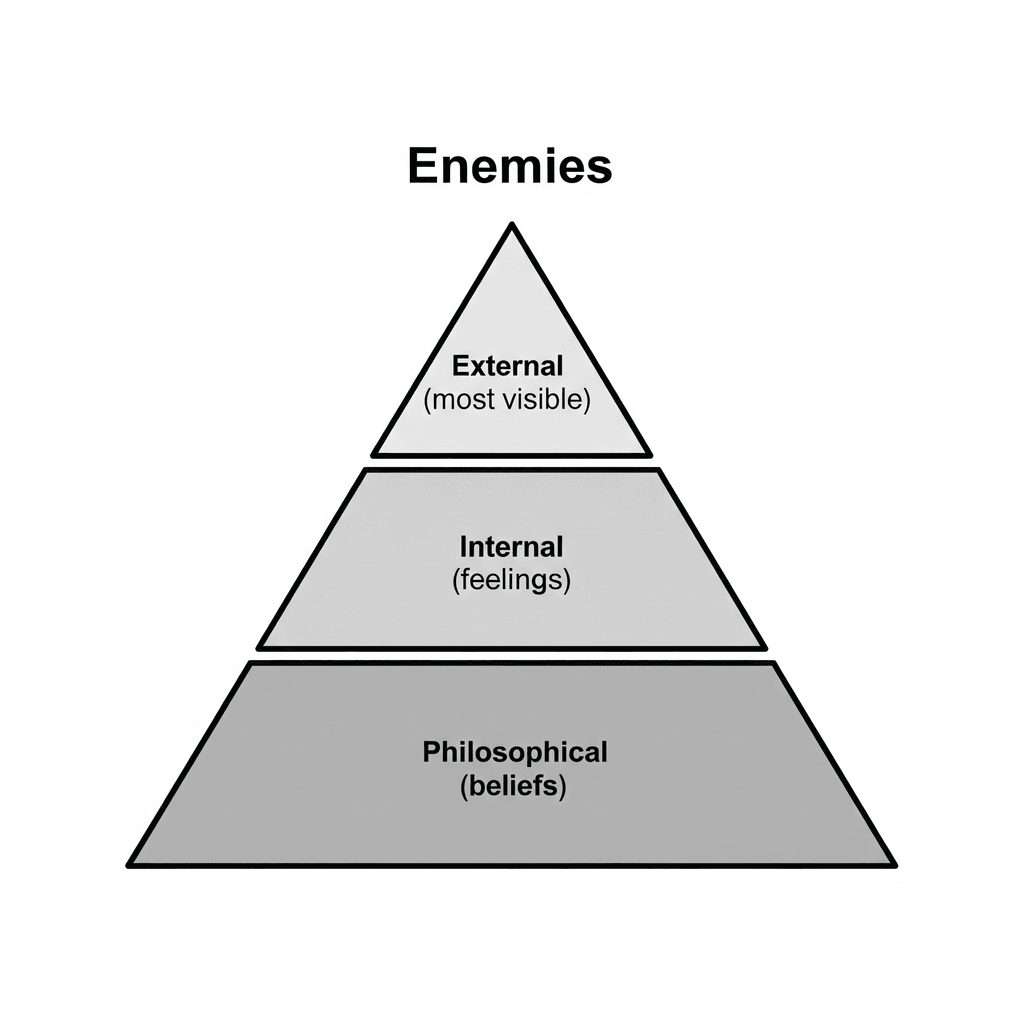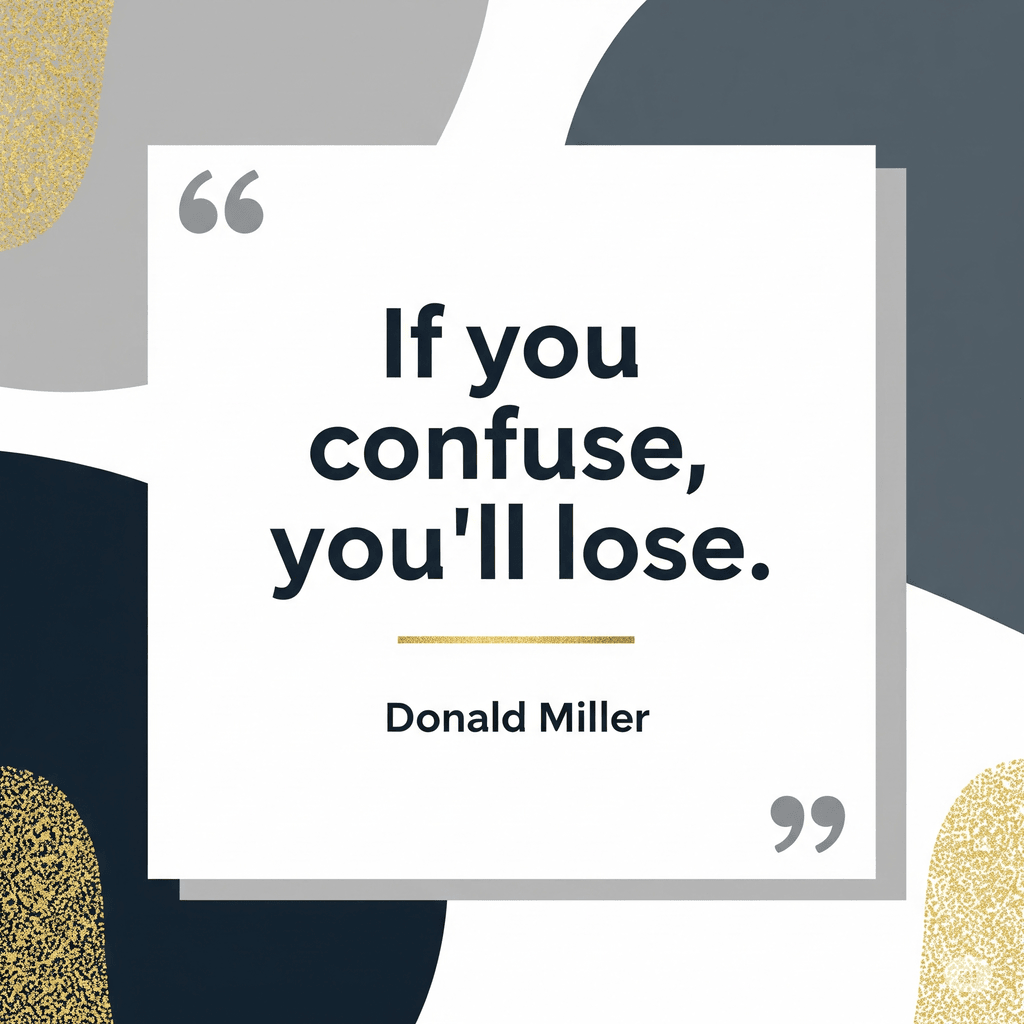Have you ever felt frustrated? You have an amazing product, outstanding service, and a dedicated team. You’ve spent a lot of time and money building a beautiful website and running ads on social media. However, the results are far from what you hoped for. Potential customers come and go without a trace, promotional emails go unopened, and sales figures stagnate. You feel like you’re shouting in a crowded room, but no one listens.
If this sounds familiar, you’re not alone. Most businesses, both big and small, make one fundamental mistake: they fail to clarify their message. They talk about product features, company history, and awards they’ve won. As a result, they create “noise” that confuses and makes customers’ brains work too hard. In a world flooded with information, confusion is a silent killer of conversions.
Donald Miller, in his groundbreaking book Building a StoryBrand, refers to this condition as the “Narrative Void.” This is a vacuum created when a company fails to provide a clear story where customers can see themselves as the hero. This article will break down the three fundamental pillars of the StoryBrand formula that will transform the way you communicate forever, helping you break through the noise and start connecting with customers on a deeper level.
A New Paradigm: The Customer is the Hero, Not You
The number one mistake that almost all businesses make is positioning themselves as the hero in the story. Their websites say, “We are the best,” “Look at our achievements,” or “We have been around since 1982.” The problem? Customers don’t care about your story; they care about their own story. Everyone is the protagonist in their life narrative, and they instinctively seek brands that can help them win the day.
The StoryBrand formula flips this script. The main rule is simple yet transformative: The Customer is the Hero. Your Brand is the Guide. Think about great movies. Luke Skywalker is the hero, Yoda is the guide. Katniss Everdeen is the hero, Haymitch is the guide. Guides do not steal the spotlight; rather, they provide the hero with a plan, tools, and encouragement to succeed.
When you position the customer as the hero, your entire message shifts. You stop talking about how great your company is and start talking about how great the customer can be with your help. This is a shift from “Look at us!” to “Look at what you can achieve.” This approach is fundamentally more engaging because it aligns with how the human brain works, always seeking benefits for survival and growth.
The complete framework for applying the 7 story elements that make the customer the hero, known as the SB7 Framework, is discussed in depth and step-by-step in the book.
Identifying “The Villain”: The Catalyst of Every Great Story
Every compelling story needs conflict. Without Darth Vader, there is no Star Wars. Without the Joker, there is no Batman. Conflict is the engine that drives the narrative forward and keeps the audience engaged. In the business world, this conflict is embodied by “The Villain.” Your customers are not buying products or services; they are buying solutions to their problems. “The Villain” is a way to personify those problems.
Miller explains that there are three levels of villains that your brand must address for the customer:
- External Villain: This is the physical or real problem the customer faces. For example, an unkempt lawn, complicated taxes, or lack of time. This is the most obvious problem.
- Internal Villain: This is the emotional turmoil caused by external problems. Frustration, confusion, self-doubt, or feelings of incompetence. This is the real reason customers seek solutions. People buy luxury cars not because they need transportation (external), but because they want to feel successful and valued (internal).
- Philosophical Villain: This is the struggle between “what should be” and “what is.” It connects the customer’s problems with a larger narrative about good vs. evil. For example, “You shouldn’t waste time on administrative tasks” or “Everyone deserves financial security.”
Great brands sell solutions to all three levels of problems. They do not just sell lawn care services (addressing the external villain), but they also sell relief from the embarrassment of having a messy yard (internal) and the right to have a beautiful home without hard work (philosophical).

Read also : The New Rules of Marketing & PR by David Meerman Scott
Clearly identifying the enemy in your marketing will soon have customers nodding in agreement and saying, “Yes, this company understands me.” However, there are three common mistakes that often occur when defining this ‘enemy’, which can make your message negative or irrelevant, thoroughly dissected in our summary at MentorBuku.
You Are the Guide, Not the Hero: The Most Crucial Role
Once you have established the customer as the hero and identified the enemy they face, your role becomes very clear: you are the wise guide. The guide has two main characteristics that build trust and encourage the hero to take action: Empathy and Authority.
Empathy is the bridge of trust. You must show customers that you understand their pain and frustration. Simple phrases like, “We understand how difficult it is…” or “Many of our clients feel…” can create an instant bond. Empathy tells the hero that they are not alone and that you care about their struggles. It’s not about passive sympathy, but rather active understanding.
Authority, on the other hand, demonstrates that you are competent to help. This is not arrogance. Effective authority is conveyed subtly and focuses on the customer. Some of the best ways to demonstrate authority include:
- Testimonials: Let satisfied customers speak for you.
- Statistics: “We have helped 500 businesses like yours increase their average sales by 30%.”
- Awards: Briefly mention relevant awards.
- Client Logos: Showcase logos of well-known companies you have worked with.
The combination of empathy and authority is very powerful. Empathy builds connection, while authority builds trust in your ability. Customers think, “This company understands me, AND they have what it takes to help me succeed.”
Advanced techniques for demonstrating empathy and authority without sounding arrogant, including templates and practical examples for your website, are part of the exclusive insights we have prepared at MentorBuku.

Read also : Introduction to Neuromarketing & Consumer Neuroscience by Dr. Thomas Zoëga Ramsøy
Victory Vision: Paint Heaven and Hell for Customers
The final step we will discuss is about “the stakes.” A story becomes boring if nothing is at stake. Why do we care if the hero wins? Because we know the horrible consequences if they fail. Brands must do the same: clearly articulate what customers stand to gain by using your product (heaven) and what they will lose if they do not (hell).
- Heaven (Success): Paint a clear picture of what the customer’s life will look like after their problem is solved. Don’t just say “better customer service.” Say, “Imagine your team spending less time responding to complaints and more time building relationships with loyal customers.” Use visuals, testimonials, and descriptions that evoke positive emotions. Nike does not sell shoes; they sell victory and personal achievement.
- Hell (Failure): Subtly remind customers of the costs of inaction. What are the negative consequences of staying stuck with their problems? This is not about scaring them but about creating urgency. “Without a clear strategy, you will continue to waste your marketing budget on ineffective campaigns.”
By articulating these stakes, you answer the customer’s subconscious question: “Why should I care?” You give them a compelling reason to act now. This is the fuel that drives the hero past their doubts and towards the call to action.
Conclusion: From Noise to Selling Clarity
The business world is full of noise. Successful brands that break through are not those that scream the loudest but those that tell their stories the clearest. The StoryBrand formula is not just a marketing trick; it is a communication framework rooted in universal narrative patterns that have captivated humans for thousands of years.
By positioning customers as heroes, defining the enemies they face, serving as an empathetic and authoritative guide, and painting a vision of success, you create a resonating message. You stop selling products and start inviting customers into a story where they can win. This is the key to turning passive followers into enthusiastic supporters.
You have just seen the foundation. These concepts are just the tip of the iceberg of what this book offers. How can you apply them step by step, avoid common pitfalls, and integrate them into your strategy? All those answers are inside.
Sign up and Get Free Access at MentorBuku Now!

